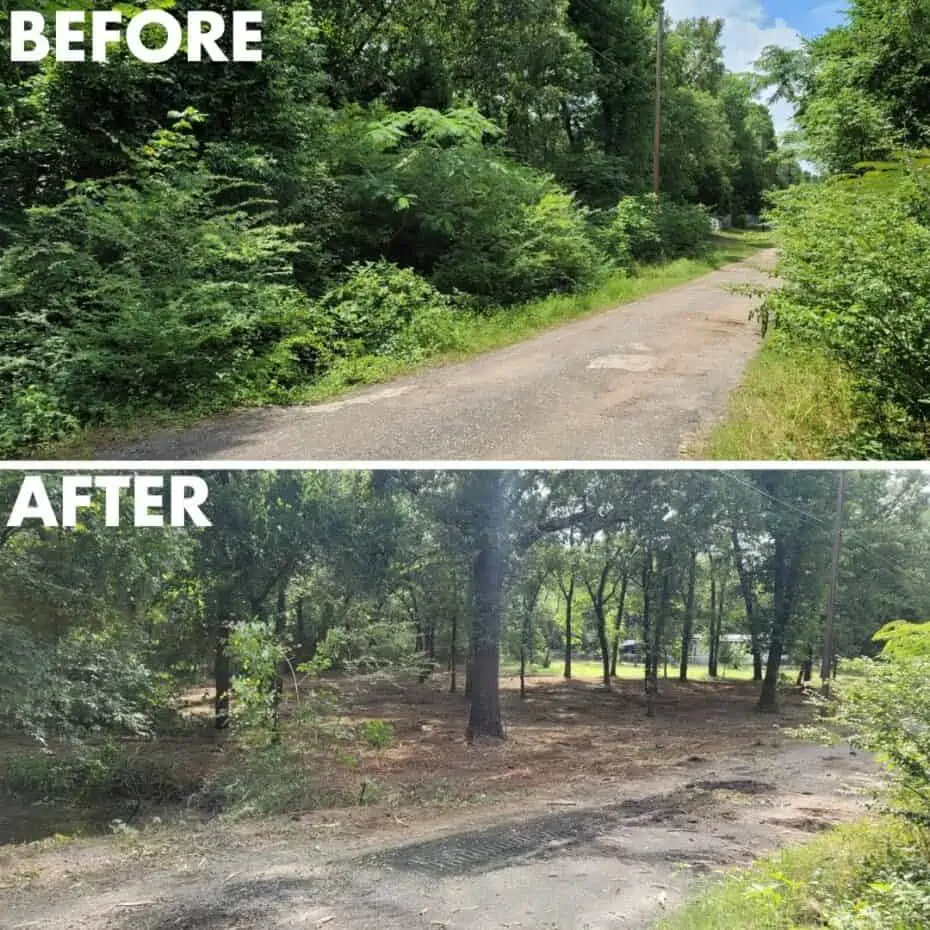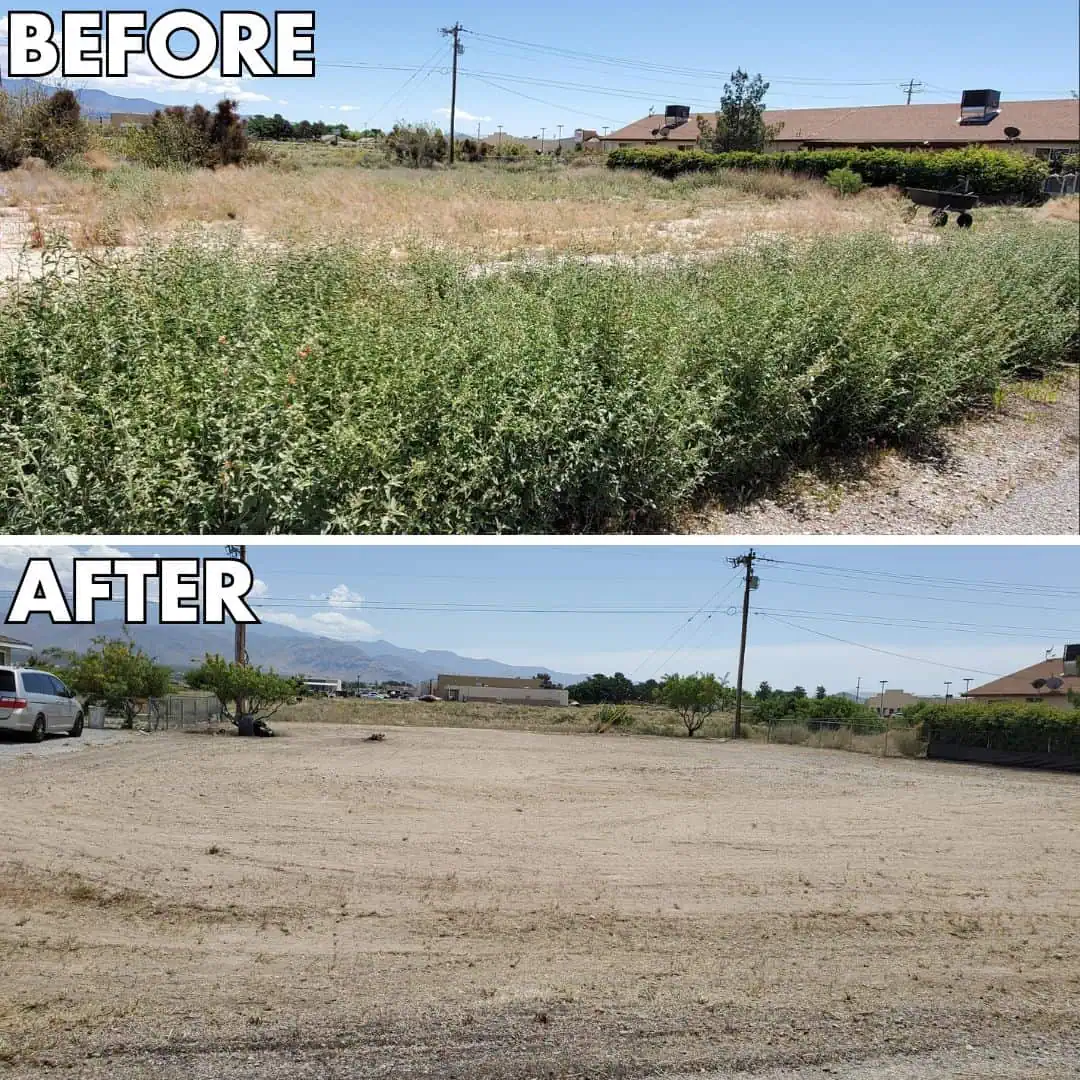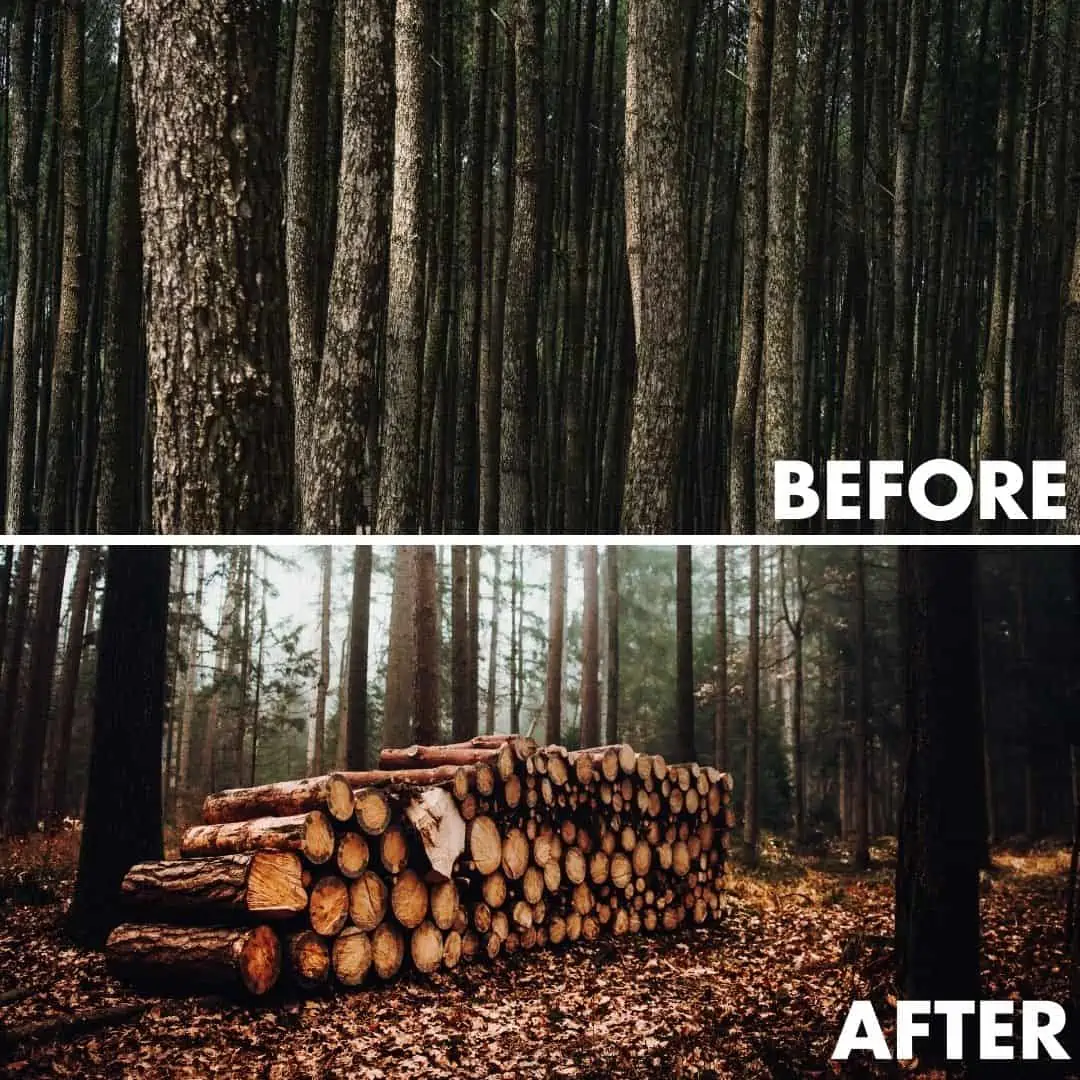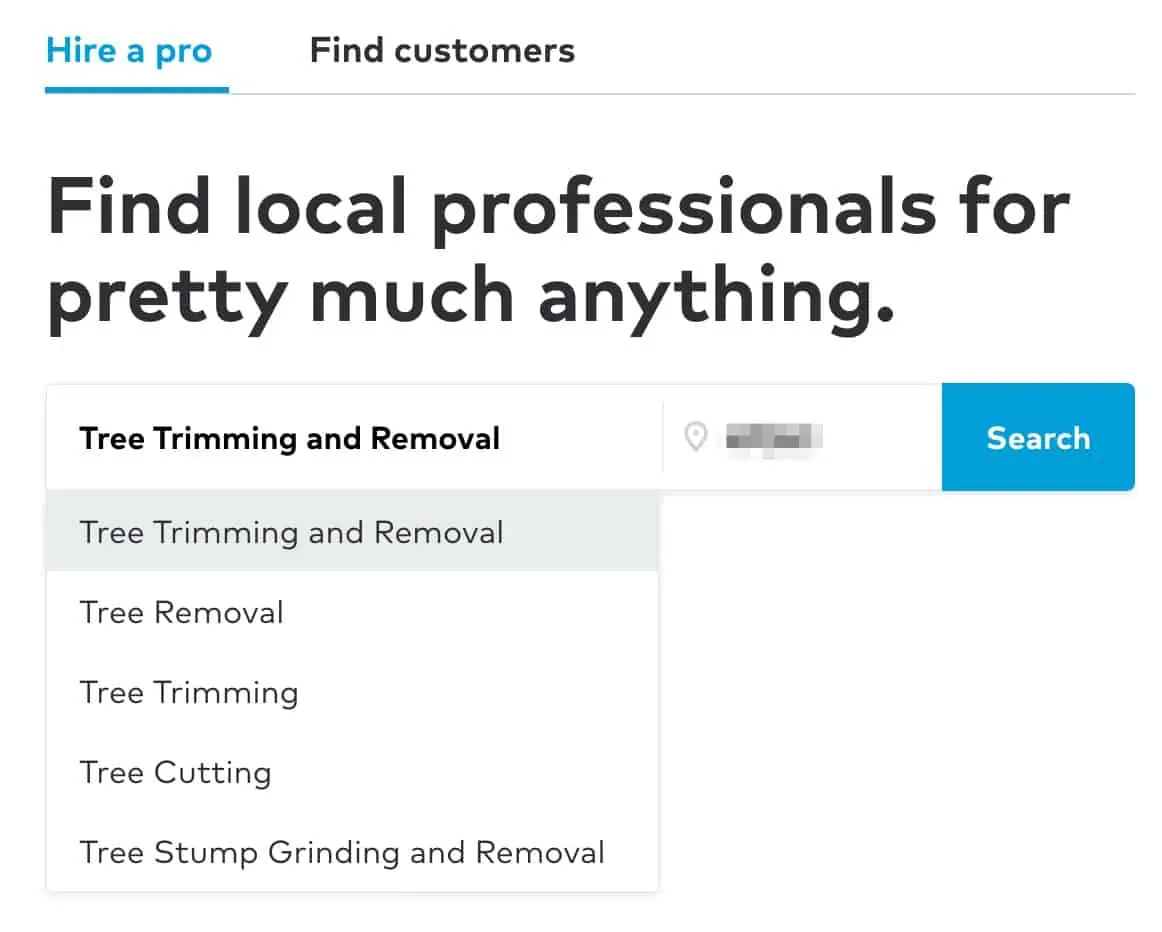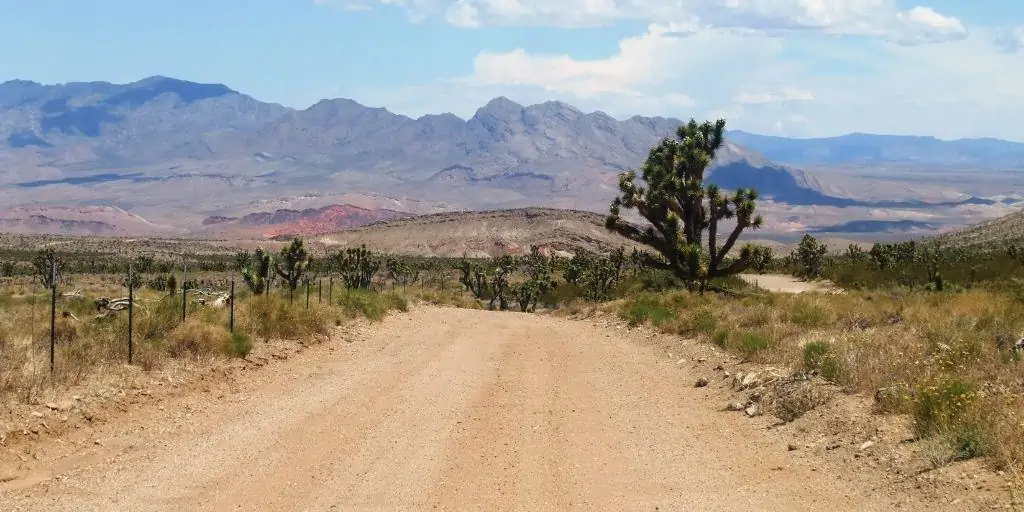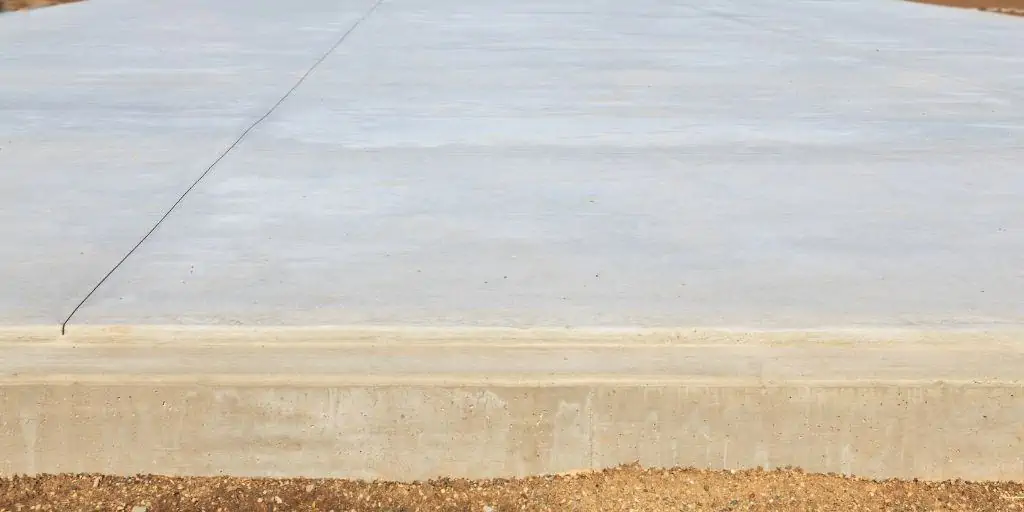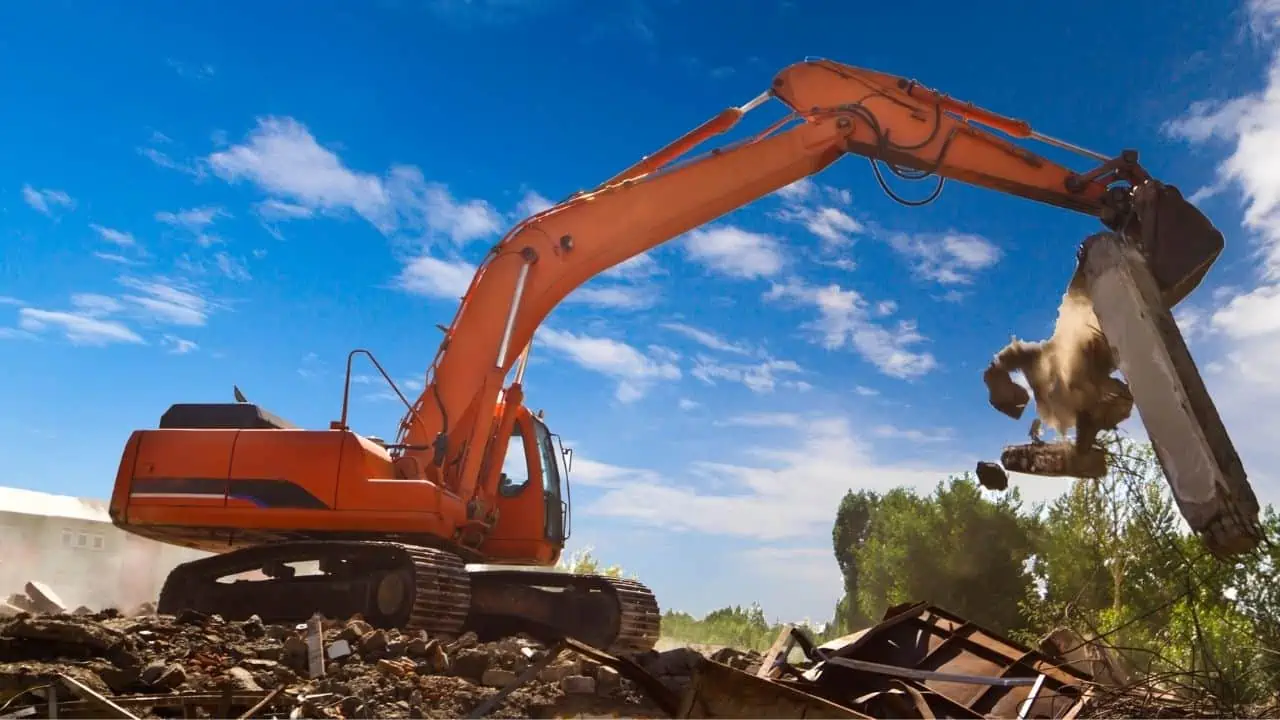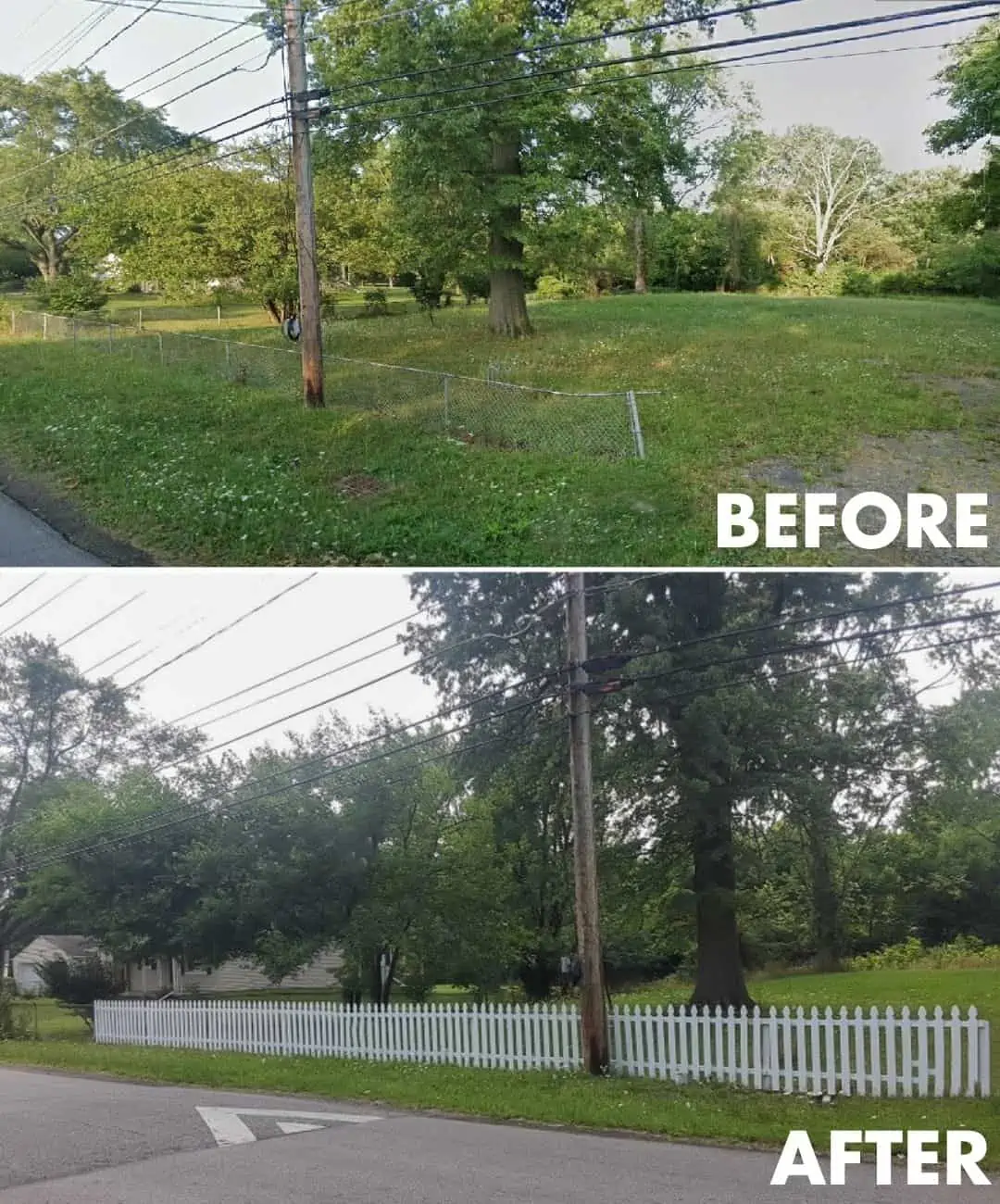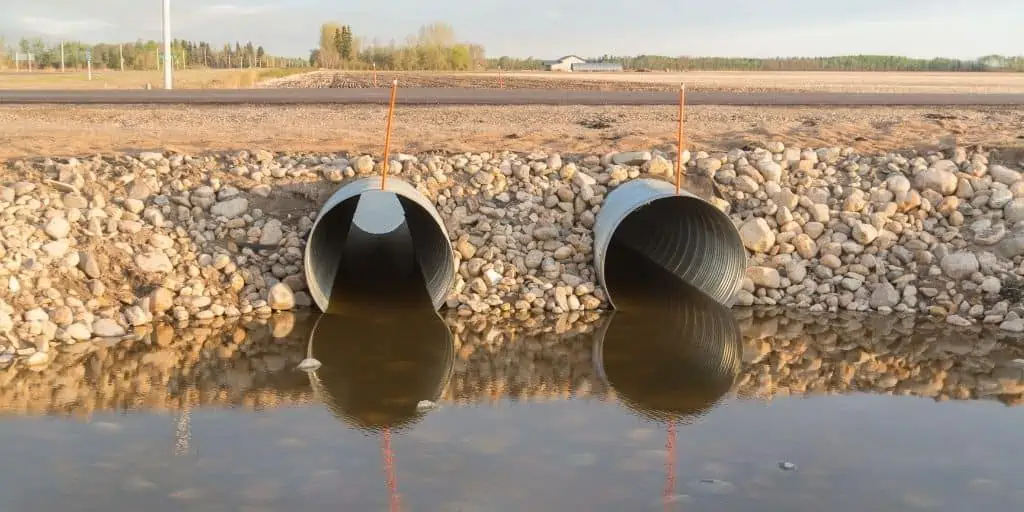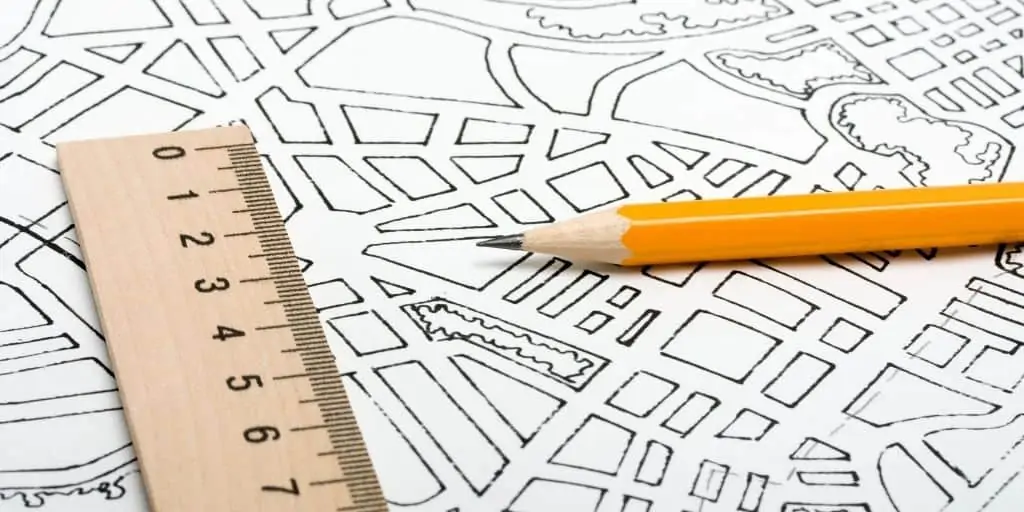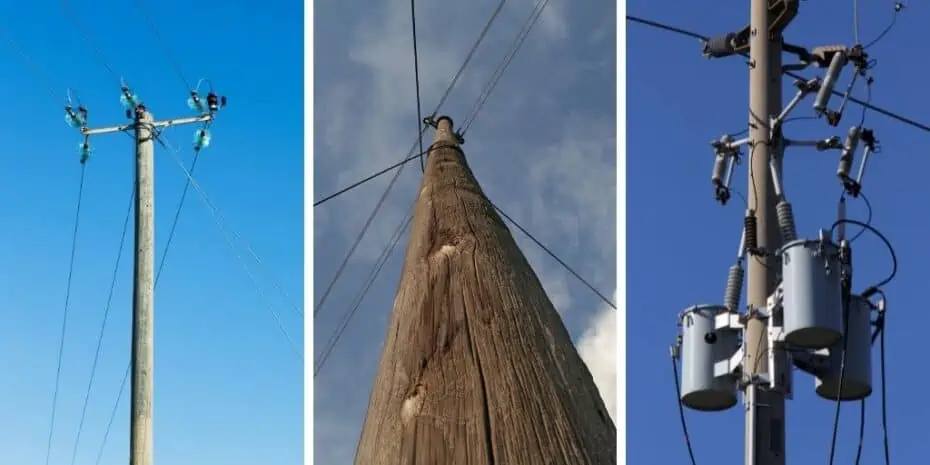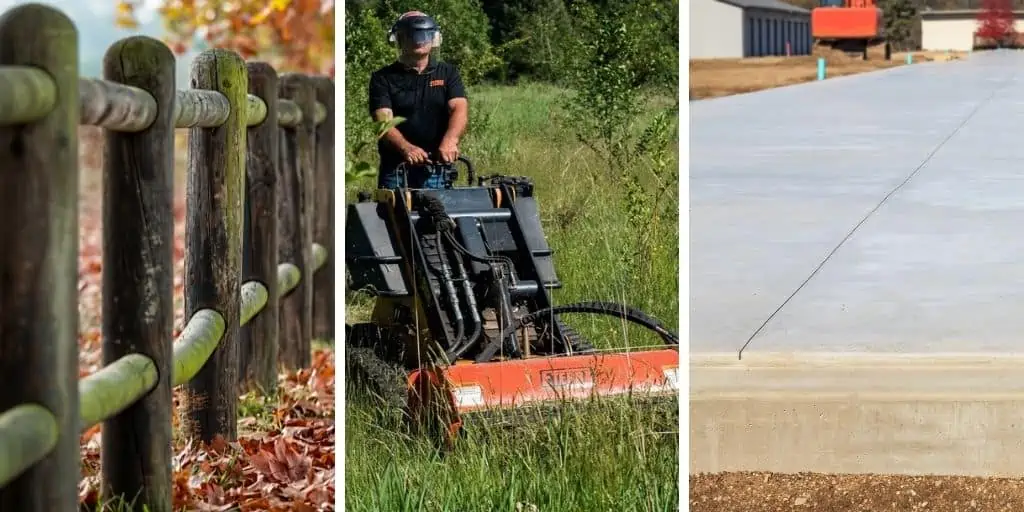
For most of my land investing career, I followed a pretty simple business model.
- Buy vacant land for a dirt-cheap price.
- Do nothing to it.
- Turn around and sell it for a higher price.
One of the best things about this business model is that when I buy land for the right price, it doesn't require any sweat equity.
I don't need to lift a finger to make improvements or add value to the property in order to make the property profitable because the profit is already baked into the deal when I take possession.
But what if a land investor actually does want to put in the sweat equity?
What options does a landowner have to make their vacant lot worth more?
How to Increase Land Value Without Much Time or Money
One of the best things about our forum and Facebook Group is that I get to see all kinds of cool examples and lessons from other people.
I've been surprised to find that there are PLENTY of ways to increase the value of land, and many of them don't require a lot of time, money, speculation, or risk.
Let's cover some ways a land investor can add significant value with minimal effort.
1. Forestry Mulching
Also known as “brush hogging” or “bush hogging,” the idea behind forestry mulching is to remove all the bushes, weeds, and other natural visual obstructions.
In most cases, this doesn't involve cutting down larger, mature trees but simply cleaning up the ground and soil can be seen, which usually makes the property more visually appealing.
As you can see from the example above, this kind of improvement can dramatically affect a property's visual appeal. Many potential buyers will find that they can visualize what can be done with the property when they can actually see through it, see what the ground looks like, and picture what could be done with it.
Cleaning up the surface of the property can go a long way. It allows potential buyers to see it as a ‘clean slate' rather than a chaotic, overgrown mess.
Cost of Forestry Mulching
The cost of this improvement varies by the size of the job and contractor. In this example above, posted in our Facebook Group by Mark Duke, he paid $1,000 to clear three lots, totaling 0.4 acres.
Andrew Flanagan also had some helpful input on the matter as well:
Brush hogging usually runs about $125-150/hr with a 4 hour minimum. That usually is clearing “underbrush” and keeping mature (4-6”+) trees with a skid steer with a mulcher front end attachment. They typically leave the ground up mulch on the property, reducing haul-away costs. True land clearing, clearing all trees and everything back to just dirt, can get pricey quick. They have to use bulldozers and heavier equipment and either haul-away the brush or burn it if allowed. Pasture mowing /small brush / saplings with a tractor/rotary mower can be cheaper at about $60-75hr.
Where to Find Help
To find someone in your area to do this type of work, you could do a search on Thumbtack or Google for “forestry mulching,” “land clearing,” or “brush hogging” to find a local contractor who can help.
2. Tree Trimming and Removal
Similar to the concept of forestry mulching, many vacant lots are densely wooded. As a result, there is a big visual barrier to seeing or using the property.
Of course, any property owner can hire a local tree service to trim or remove the trees, but most buyers have a difficult time envisioning what a property could look like on their own unless you do it for them.
The idea behind this improvement isn't to clear ALL the trees, but certain trees.
One approach would be to remove the smaller trees and bushes and leave the more mature ones so there is more visibility throughout the lot.
Another option would be to clear some space for a homesite, so it's one less job a new owner has to do in order to start construction.
Of course, one risk with this approach is removing too many trees or clearing out the wrong section of the property. This should be done with care to make sure it actually improves the aesthetic of the property instead of making it look worse.
Cost of Tree Removal
The cost of this job can vary widely depending on how many trees are being removed, the size of those trees, if they're being hauled away or chipped and burned on site. It can also vary depending on the contractor you hire. The more experienced and professional-looking companies will cost more, but they're also more likely to do the job on time and on budget.
Where to Find Tree Removal Contractors
To find a tree trimming and removal specialist in your area, do a google search or search on a site like Thumbtack for “tree removal,” “tree trimming,” “tree stump grinding,” or “tree cutting.”
3. Pave a Gravel Driveway
Depending on the highest and best use of your property, it may make sense to add a gravel driveway from the road.
This type of improvement will make the property more accessible from the road, especially for those buyers who don't own an off-road vehicle.
Cost of a Gravel Driveway
The cost of this improvement will depend on the width and length of the driveway, what type of prep work is needed, which contractor you hire, and what type of gravel or crushed concrete is used.
For example, if the property is filled with wet, clay soil, the typical prep work involves cutting 18 inches into the ground, filling the first 12 inches with sand, and then the top 6 inches with gravel. This kind of project could cost around $4 per square foot.
By contrast, if the property consists of dry, sandy soil, it could be as simple as cutting off the top 6 inches and replacing it with gravel. This kind of work would cost closer to $1.50 – $2 per square foot.
The characteristics of the soil and the amount of paving needed will have a huge impact on how much this improvement ends up costing.
Where to Find Paving Contractors
Search Thumbtack or do a Google search for any of the following:
- Asphalt Paving Contractors
- Paving Contractors
- Paving Stone Contractors
Note: This improvement may require a permit in some areas.
4. Pour a Slab Foundation
If you're dealing with a vacant lot that is zoned for mobile homes or is usable for long-term or short-term RV parking, one way to add value to the property is to pour a concrete slab.
Why? Because this is what any normal manufactured home or RV will likely need in order to use the property for this purpose.
A concrete slab isn't the only thing needed to park an RV or manufactured home, but one way to determine this is to look at the neighboring properties to see what type of land improvements were made in order to complete their residence.
With some properties, there will be some obvious places where a slab could go, particularly, in cases where the property isn't very large. But be careful—if you put a slab in a less-than-ideal place, its placement could end up being more of a nuisance than a help to the future owners.
Cost of a Concrete Slab
Depending on the thickness and square footage of the slab and the under-slab prep work required, the cost will run anywhere from $5 – $10 per square foot in most markets.
Where to Concrete Contractors
This kind of work is a very basic job that any concrete contractor can handle. Search Thumbtack or do a Google search for any of the following:
- Concrete Foundation Contractors
- Cement Contractors
- Concrete Installation Contractors
Note: This improvement will typically require a permit.
5. Demolish Old Structures and Remove Junk
Sometimes, the reason you're getting a great deal on a vacant lot is that the property has been littered with junk from the previous owner.
In some cases, there may be an old structure that has been burned or destroyed and simply needs to be removed.
The whole idea behind this kind of improvement is to pay for the sins of the previous owner.
You don't need to add anything to the property but simply remove what shouldn't be there in the first place.
Cost of Demo and Junk Removal
The cost of this work will depend on how much needs to be removed and if any demolishing contractors are needed (in the case of an old house or mobile home, for example).
Sometimes this type of work can be removed by hand. In other cases, the use of heavy equipment and/or a demolishing contractor will be needed, which can add significant costs, especially if they have to travel a long distance to get to the property itself.
The cost of demolishing a structure varies based on several factors, including (but not limited to):
- The proximity of the demolishing site to the landfill where the demolished building will be dumped on.
- How easily a crane and other heavy equipment can access the structure.
- How much red tape and environmental oversight is required by the local municipality.
- Size of structure and amount of material to be hauled away.
In areas with very little environmental oversight, some buildings can be demolished and buried onsite, which is the least expensive scenario. However, in most areas where there are actual rules to be followed, the work can be much more expensive. Most full-scale demolishing projects range anywhere from $5K – $25K.
If the property simply requires trash cleanup, with no demolishing involved, the cost is usually based on the number of dumpsters required and the labor to get the garbage into the dumpsters. Tires will often cost extra to dispose of, on a per-tire basis. Otherwise, garbage is garbage and won't be discriminated against.
Where to Find Help
Do a Thumbtack or Google search for keywords like:
- Garbage Removal Services
- Demolition Services
- Demolition Contractors
6. Install, Fix or Replace a Fence or Gate
The first time I heard about this, I almost couldn't believe it. It turns out, a fence and/or gate can add a lot of value to some properties.
Depending on the material, height, length, and type of fence or gate, the costs can be all over the map, but a higher cost doesn't necessarily equate to a higher value.
Most fences are installed to give the perception of security and to enhance the curb appeal of the property. There is no such thing as an impenetrable fence or gate, but they do send a message that the owner cares enough about the property and they're willing to add certain security measures that will make it harder to get through.
One interesting example of enhanced curb appeal was this post I found on Facebook (unfortunately, I can't recall where I found this or who posted it… so if this is your picture, let me know so I can give you credit)! This person removed an old, dilapidated fence and replaced it with a new white picket fence.
From what I recall, this person made a lot of money on this flip (I think they said it was $43K, but I can't find the original source to verify), and they thought the fence played a significant role in the profit they extracted from it.
A modest-sized fence does not represent a major cost or risk. And as you can see, it does have a notable impact on the property's curb appeal, even with no other structures on the property.
Cost of Fencing
The cost of a fence depends on the material used for a fence (wood, PVC, chain link, wrought iron, etc.), the height of the fence, the length of the fence, and who is hired to install it.
One helpful tool that can help estimate the cost of a fencing project is the Bekaert Fence Calculator.
Another thing to keep in mind is that if your goal is to see an actual ROI from your fencing project, try to focus on enhancing curb appeal. That's all.
Fences can cost a lot of money, especially if the fence is tall, has a gate, uses the highest grade material, and runs around the entire length of a large property. If you install this kind of fence, you can sink a lot of money into a property fast.
Where to Find
Search Thumbtack or do a Google search for any of the following:
- Fence and Gate Installation
- Fence Installation
- Fence Contractors
- Fence and Gate Repair
7. Plant Flowers
This kind of improvement won't have a huge impact on a property's value, but given the low cost, it could be a worthwhile investment in some cases.
Planting flowers will have a longer lead time to get it done, and it requires some planning, but many state natural resources departments can offer help.
Generally, these can be sown with an ATV planter, easily subbed out in the midwest and rural areas. Here’s one example from Missouri.
At first, you might see this one and think:
“Really?”
I'll be the first to admit that it's hard to draw any material value from flowers on an appraisal, especially given their seasonal nature.
On the same coin, when you think about how many people buy land because of their perceptions and dreams of how they'll use it, rather than any concrete facts that an appraiser can verify, the idea seems to hold some weight. Not to mention the fact that it can be done at a very, very low cost with local help in many cases, it begs the question:
“Why not?”
I first heard of this one from Cory of locallandbuyer.com.
8. Install a Culvert
I heard about this one from Andrew Flanagan, who has installed culverts at several of his properties.
A culvert is a structure that channels water past an obstacle or to channel a subterranean waterway. These are typically buried under the soil and made from pipe and used as cross-drains to relieve drainage of ditches at the roadside and to pass water under a road or driveway (source).
In many areas, culverts are one of several land improvements needed in order to build a dwelling. Adding this improvement proactively removes one more thing from the future landowner's plate and adds real value to the property.
Cost of a Culvert
The cost of this improvement varies county by county and the size and type of culvert needed. Some common project costs can range from $1,500 to $5,000, depending on the complexity of the property. The county road and bridge department typically oversees the installation process to ensure it is done correctly.
Similar to the other improvements on this list, this is one of many steps often needed to do further improvements to a property or to improve accessibility. Since this improvement is a necessary step, it will simply remove one of many items that the future buyer will need to do to improve the property further.
Where to Find Help
Culvert installation is typically done by driveway contractors because it's part of the driveway engineering process. You can find this kind of help by doing a search for:
- Concrete Driveway Contractors
- Asphalt Driveway Contractors
- Blacktop Driveway Contractors
- Driveway Repair Services
9. Change the Zoning
Changing the zoning on your property is one way to add significant value without physically touching it.
The costs of a zoning change will depend greatly on the municipality, if you hire any specialists to assist you, and how long the zoning board takes to review and approve the zoning change.
Cost of a Zoning Change
One example from my business was when I purchased a large residential lot on the border of a Residential and Commercial zoning district. The zoning change made a lot of sense and I met almost no resistance from the zoning board when they reviewed it. The total cost to me was approximately $3,000 and the whole process took about four months from when I submitted the application to when the approval was finalized.
However, I've heard stories of other, larger, more bureaucratic cities where the same kind of zoning change can cost upwards of $40,000.
Before you decide to pursue this kind of change, reach out to the local zoning administrator and get their feedback on whether or not they feel it makes sense. This can reveal a lot about whether it makes sense to pursue a zoning change.
Where to Find Help
If you want assistance with presenting your zoning request to the municipality, many architect design firms, civil engineering firms, and general contractors have experience with this kind of work. Try calling a few of them to see if they can help directly or if they can refer you to a specialist who knows how to get these requests presented to the zoning board in your area.
10. Obtain Land Entitlements
Similar to the process of changing a property's zoning, another improvement that can be made without ever touching the property is obtaining the entitlements for the property.
In a nutshell, entitlements are the rights you have as an owner or developer to develop your property for a specific purpose.
This typically involves meeting with the city or township board with detailed plans on how property will be developed, with the intent of getting the municipality's approval to proceed with those plans.
Even if you aren't planning to develop a property yourself, simply getting this approval can go a long way in adding value to a property because the future owner or developer won't have to go through this step (which can be long and arduous in some cases).
11. Perc Test Approval
If your property is located in an area that doesn't have access to a nearby sewer system, a septic system will need to be installed to store the wastewater.
And for a septic system to be installed, the property will need to pass a perc test.
A “perc test” (short for percolation test) is a soil evaluation that tests the rate at which water drains through the soil. This test is a requirement because its results will provide crucial information about the feasibility of a septic system.
If a property fails its perc test, it won't be able to hold a septic system, which ultimately means the property isn't buildable. That fact has a huge impact on the value of that property.
Most serious buyers who pay full market value for their land with the intent of developing it will order a perc test before they buy.
Perc tests cost time and money, and until this question is answered, there will be uncertainty about the usability of the property (and thus, its value).
If you own a property that doesn't have an approved perc test, you might consider getting this question answered so your future buyer has more certainty about what they can do with the land they're buying.
Cost of a Perc Test
The cost of this test varies quite a bit based on the county health department that oversees each test. In some counties, the process is as simple as digging a hole by hand and pouring water into it. In other counties, the process requires heavy equipment and a much deeper hole.
The cheapest I've seen perc tests is around $150 and the most expensive I've seen is around $5,000. Either way, if you pay this cost out-of-pocket, it's one less cost and point of uncertainty that your future buyer will have.
Where to Find Help
If you’re ready to hire a pro to evaluate your property, all you need to do is call your county health department (just Google the county name and then “Health Department” to find their phone number) and ask them what the requirements are to properly conduct a perc test.
In some counties, the health department will have to perform all of the work. In others, they will require a licensed excavator to do all the digging ahead of time.
Whatever the situation, the health department should be able to inform you of how the process works and what the typical costs are.
12. Water Access
Every dwelling needs access to water. If your property doesn't already have water lines nearby, you or the future owner most likely need to drill a freshwater well to resolve this issue before building.
Depending on the depth of drilling required and the amount of pressure needed, this job can get expensive, but once the job is done, the property suddenly becomes much more useful as a dwelling.
Cost of Drilling a Well
According to HomeAdvisor,
“The cost of drilling a well costs $5,500 for an average depth of 150 feet. Most projects range between $1,500 and $12,000. Expect to pay between $15 and $30 per foot of depth or up to $50 for difficult terrain. For shallow depths, digging may be a more affordable solution as $10 to $25 per foot.”
Similar to the other items on this list, the true cost can vary depending on the market, the equipment involved, the distance traveled, and the depth of the well.
Where to Find Help
You can find local contractors on Thumbtack or through a Google search for:
- Well Drillers
- Well Services
- Well Pump Installation
13. Electric Supply
Similar to the issue of water and septic, electricity is another key ingredient that every building will need access to.
If your property doesn't already have a pole onsite or a powerline running through it, you could contact the local power company to see about bringing power to the property.
Cost of Electric Powerlines
The cost of bringing electricity to your property will vary depending on what type of service is needed, how many new poles (if any) need to be installed, and how far the powerlines need to travel.
Steve Wilson, writer for Land.com, explains the issue as follows:
If power lines are running along the road in front of the property, then putting in a pole or two is something [utility companies] do every day. But if the building site is a long way off the road (maybe a mile into the woods, for example), the cost of getting utility power to the site will be very different.
The power company will give some service lines for free—for instance, from the road to a site 100 feet away. But when you move beyond with many more poles and many more feet of wire required, then the cost can be $25 to $50 per foot. So for a hypothetical one-mile setback from the road, say, this means somewhere between $125,000 and $250,000. Some utility websites even offer to let you finance part of this cost at an APR of around 10 percent. Making sure you plan ahead—and understand the potential costs—is critical to your project’s success.
If your property doesn't already have a transformer controlling the power supply, that will also need to be installed. In some areas, this installation is handled completely by the power company. In other areas, the property owner may need to work with an electrician to get this installed on their own.
Where to Find Help
Contact the power utility company in your area to find out what is involved and what the potential costs will be for making this improvement to your property.
Do you have other ideas on how to increase land value? Join the conversation in the forum!

